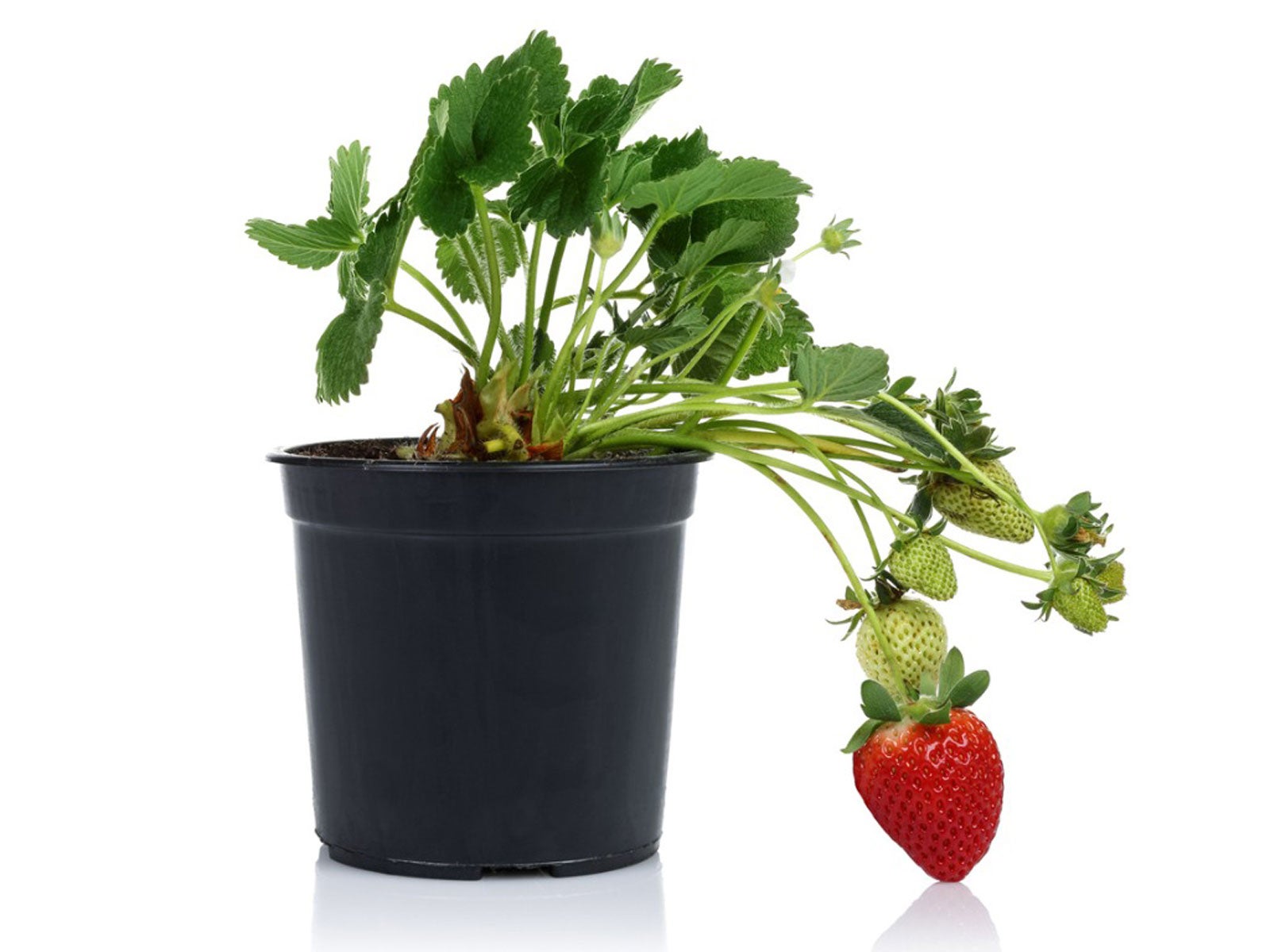Growing Strawberries Inside: Caring For Strawberry Plants Indoors

Strawberry plants indoors? You betcha! In fact, growing strawberries indoors may be an easier option for some people. Growing strawberries indoors allows you to control such factors as light and temperature, and ousts all those pesky outdoor critters whose sole aim is to keep you from your strawberry shortcake. Keep reading for tips on how to grow strawberries inside.
How to Grow Strawberries Inside
When considering how to grow strawberries inside, one must consider space issues and the variety of strawberry houseplants one wishes to cultivate. Space-saving ideas such as strawberry pots or growing strawberries in containers that hang from the ceiling are great options. Whole areas of a home or just a windowsill may also be dedicated when growing strawberries indoors, but be sure not to overcrowd the plants lest they become susceptible to disease or mold issues. The key ingredient to growing strawberry houseplants, of course, is sun exposure. Whether indoors or out, strawberries need at least six hours of sun per day, which can be provided by sun exposure or by using indoor plant lighting.
Strawberry Houseplant Varieties
When choosing promising strawberry houseplant varieties, there are really two major types: June-bearing strawberries (producing in June!) and ever-bearing strawberries (which will fruit two times a year). Some ever-bearing strawberries may even produce berries more than twice a year. A terrific cultivar suitable for growing strawberries inside is Alpine strawberry, which maintains a more clumping habitat rather than ranging -- a good thing if you have a space issue. You may also start strawberry houseplants from seed. If this is the case, you'll want to freeze the seeds for two to four weeks to jump-start the germination process.
How to Care for Strawberry Houseplants
Strawberries have a very shallow root system and can, therefore, be planted in almost anything given the correct soil, water, and light. Strawberries in containers (or out for that matter) require a soil pH of 5.6-6.3. A control release fertilizer is recommended despite the depth of the strawberry container or once a month with a standard potassium-rich fertilizer until the plants flower. Once strawberries in containers begin flowering, fertilize every 10 days until harvesting is finished. Before planting strawberry houseplants, remove runners, trim any old or dead leaves, and trim the roots to 4-5 inches (10 to 12.5 cm.). Soak the roots for an hour and then plant the strawberry so the crown is even with the soil surface and the root system fans out. Also when growing strawberry plants indoors, you will want to remove the blossoms for the first six weeks after planting. This allows the plant time to establish before expending its energy on producing fruit. Growing strawberry plants indoors should be checked daily to ascertain the need for water; usually daily until the growing season and thereafter only when the top inch (2.5 cm.) is dry. Keep in mind, strawberries like water, just not too much.
Sign up for the Gardening Know How newsletter today and receive a free copy of our e-book "How to Grow Delicious Tomatoes".

Amy Grant has been gardening for 30 years and writing for 15. A professional chef and caterer, Amy's area of expertise is culinary gardening.
